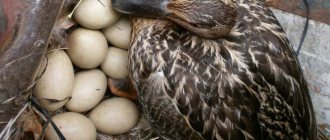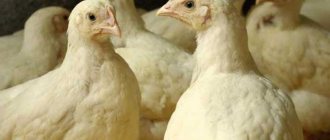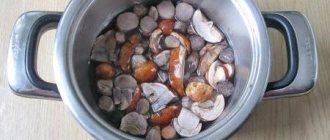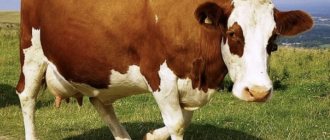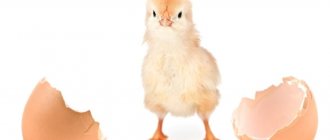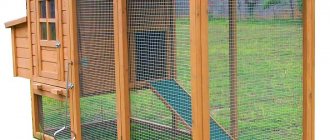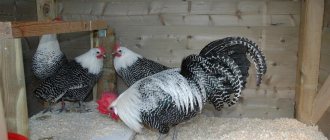2 215
no comments yet
4
Author of the article
Rasskazov Pavel
Reading time: 1 minute
There is no scientific evidence that the presence of a rooster affects egg production. Therefore, it is believed that to obtain only eggs, a male in the herd is not necessary, and his absence completely eliminates the risk of obtaining fertilized eggs. If a farmer is interested not only in the egg component, but also in regularly producing young animals, a rooster in a chicken family is necessary.
Introduction
When you only need eggs
Chickens will gain weight and lay eggs well if you create comfortable conditions for them. Namely, organize lighting, ventilation, high-quality food, and nesting sites. If necessary, heating and walking.
Hence the conclusion: a rooster is not needed to regularly produce eggs. It does not affect the number of eggs laid. Continuing the topic, we recommend that you read the article “Can hens lay eggs without a rooster?”
Needed or not
Before purchasing a male, you first need to decide what exactly he is needed for. The rooster is the fertilizer. And if you plan to breed chickens, then you can’t do without it.
In addition to this, the male will ensure order in the pack. Determines the daily routine. And will provide protection to chickens and offspring.
It has been noticed that when chickens live without a leader, over time their maternal instinct disappears. They stop hatching eggs. They have a more chaotic day. Strong females appear in the flock. They humiliate the weak, depriving them of privileges: food, a soft place on the bedding.
Comparison of simple and fertilized eggs
There are a large number of rumors that say that fertilized eggs contain more beneficial properties and are more tasty than simple eggs, which is not true, since the effect on chickens from a rooster is purely physiological - within three weeks after intercourse, the chicken will only produce fertilized eggs. At the same time, no differences will be visible in the characteristics of the eggs.
The only difference is that eggs that have been fertilized are considered dietary for 5 days, and simple ones for a week. Both are stored for 25 to 30 days under correct storage conditions.
Life of a male in a pack
Advantages
Let's take a closer look at why you need a rooster in the chicken coop.
First of all, the male regulates the life of the inhabitants of the poultry house by the clock. The chickens, under his leadership, wake up and go to bed at the same time. They eat. They go out for walks.
As a strong man, the rooster feels that he is obliged to protect the hens from internal squabbles. And external irritants that threaten the health and life of females. These could be predators.
Or a farmer who daily renews food in the feeders and water in the drinking bowls. Sometimes this takes about an hour. Because the male does not allow him to approach the containers and hens.
Negative points
On the other hand, keeping a rooster in a chicken flock also has disadvantages. The main one is aggressive behavior. Especially if there is more than one male in the territory.
There is always a risk of physical injury to the farmer keeping the livestock. And also for children who come close to the enclosure. Or they will go directly into the chicken coop.
How to deal with this is described in the article “The rooster pecks and attacks: what to do and how to wean it off.”
Other cons
Often, conscientious laying hens are looking for a place to hatch their eggs. But not everyone manages to do this in peace. The leader of the herd was not used to anyone sitting idle. And he looks at hens exactly like that. Therefore, he begins to chase them throughout the chicken coop. Many farmers move the males to another premises after the eggs are fertilized.
Roosters often spoil the appearance of hens. During the mating process, they injure the females. They tear out feathers and scratch. And they even hit you with their beaks. Chickens become stressed due to this treatment. And if the wounds get infected, infection cannot be ruled out.
Do chickens lay eggs without a rooster?
It is a myth that chickens cannot lay eggs without a rooster. In reality, the egg production of a laying hen is influenced by many factors, and, above all, nutrition: its quality and standards. The number of eggs also depends on the breed of bird, and not on the presence of a male bird.
Like all female representatives, a chicken produces an egg in its body, and it is constantly produced in mature birds.
The formation of the egg is carried out as follows:
- the egg matures in the follicle, grows and forms the yolk;
- when it reaches a size of 40 mm in diameter, the yolk leaves the follicle and enters the oviduct;
- the “body” moves through the reproductive system for 12 hours, during which a multilayered protein shell is formed on it;
- the egg moves to the isthmus of the oviduct, where it is covered with a thin film. The film formation process lasts about 1 hour;
- then the egg begins to “dress” in a hard shell - a shell, which will take 18 hours;
- a fully formed egg comes out, and 40-50 minutes after laying, the next yolk begins to move through the oviduct.
Read also: DIY drip irrigation scheme
Mechanism of egg appearance
Important Function and Other Features
About egg fertilization
For the eggs to be fertilized, the rooster must come into contact with the genitals of the hen's cloaca.
It should be noted that with high libido in a male, the quality of the seminal fluid decreases. In this case, not every egg will be fertilized.
And vice versa - with a small number of matings per day, the concentration of semen in the rooster increases. Find out more in the article How Roosters Impregnate Hens.
Much depends on how old the male is.
Age
Puberty of males occurs at 4-6 months. There is an opinion that after two years of activity the old rooster should be replaced with a young and healthy one.
Roosters intended to improve the qualities of the breed are carefully selected. They must come from the best layers of the flock.
Moreover, in order for chickens to produce high-quality offspring, it is recommended to take the cockerel from another herd. So that he is not related to females.
One rooster can be kept in the herd for a maximum of 3 years. Further maintenance is unprofitable. The male continues to eat as he ate. But the quality of fertilization drops sharply. And he's not gaining weight.
Details and Details
Already at 25 weeks of life, birds should reach full puberty, but in representatives of meat breeds this process occurs a little later. The activity of a male directly depends on his purpose: the lungs are more mobile and fertilize more hens. If the average number of happy females in meat birds ranges from 10 to 15, with rare exceptions - 20, then smaller ones in size and weight cope with 20-25, and some mate even with 50 females per day.
To the question of how many roosters are needed for chickens, the answer is this: for 10 chickens, one is enough. In this case, both the eggs will be fertilized and the birds will be happy. If there is one male in a flock that is too large, there is a risk that not all eggs will produce chicks. If the goal is not the reproduction of birds, and the rooster is needed only for decoration, a second one will not be needed. On the contrary, a large number of males leads to aggressive behavior.
When a pair of roosters lives in the same chicken coop, they feel like competitors and seem to be dividing the territory, which means that a fight between them cannot be avoided. It gets to the point that in some cases, after a showdown, only one remains alive. To avoid showdowns and consequences after them, it is better to limit yourself to one Plymouth rock.
If, nevertheless, there is a need to keep two males, then it is better to choose one younger, the second older. When purchasing, you should take a closer look at their behavior: it is advisable to take calm individuals, then there is a chance that they will get along together.
If after the purchase it becomes clear how one always prevails over the other, you will have to sacrifice the weaker one.
Number of hens and roosters in the flock
All birds are different
There are many breeds of chickens in the world, differing in physical characteristics and orientation.
Some chicken breeds are more active and have a quick temper. Unable to care for offspring. Others, on the contrary, are phlegmatic and submissive. They can hatch their own and other people's eggs.
Accordingly, different females have different requirements for males. Although the main ones are similar. Let's find out how many roosters should be kept in a flock.
Formation of families
Now let's find out how many hens are needed for one rooster. It depends on the number of females.
For example, for 20 egg-laying hens you will need two cockerels.
Fighting breeds require the same number of roosters per 10 hens.
And for 6 meat-producing males you need to keep 50 females.
You should not keep more roosters. This leads to frequent fights and increased levels of aggression in the herd. Males are genetically programmed to fight for a place in the sun.
In addition, many males will cause serious injury to the hens. Since the number of matings will double. And the volume of fertilized eggs may decrease.
What to do if there are more or less roosters than normal
However, situations in life are different, and it is not always possible to physically adhere to the recommended standards.
Did you know? Chickens can make about 30 different types of sounds.
In such cases, the following techniques will help:
- When there are too many roosters for the flock, pay attention to their behavior . If they get along peacefully and do not interfere with the chickens laying eggs, then there is no point in interfering with their life. However, when males cannot divide the territory, it is better to get rid of the most pugnacious ones;
- if there are too many chickens for the available number of roosters, then you can get more birds . In this case, try to take males from the same brood, the same age, then there is less chance that cockfights will take place in your yard;
- It happens that for every male there are fewer females than normal . Chickens can suffer from excess attention, so every week let them rest, moving the birds away for 2-3 days.
About cockfighting
Allotted area
Each rooster needs to be given some space. Males love freedom. Cramped conditions will negatively affect behavior, quantity and quality of matings.
For normal life, one male is entitled to 0.5 square meters. m.
How to avoid fights
To prevent roosters from getting into quarrels and fights, they must be properly housed in the chicken coop. All livestock are divided into families of at least 10 chickens.
How many roosters are needed per family is determined by their age and breed. Most often, in one family it is enough to have one adult rooster for every ten hens. It is recommended to keep a young male as a replacement.
When planning families in this way, you need to take the advice of experienced poultry farmers. And settle in the same territory the cockerels that originally lived in the same family. They managed to get used to each other. They will not quarrel or fight.
If fights do occur, the competitors are placed in different corners. There are other methods described in the article “What to do if roosters are constantly fighting.”
How a rooster impregnates a hen: insemination scheme
Mating of hens and roosters occurs regularly. To find out how a male fertilizes chickens, and what factors may interfere with reproduction, you need to carefully observe the stock in the chicken coop.
Note! During the period when the rooster molts and changes its plumage, the process of fertilization does not occur. The male drives away the hens and often does not allow them to go to the common feeder.
Why does a rooster trample a hen?
After the rooster performs his mating dance, he saddles the hen and holds her feathers on the withers with his beak. This way the male prevents further resistance from the female. Then the male paws through the female’s plumage (“tramples”) and searches for her cloaca. It is very difficult to externally see how chickens mate, since the fertilization process takes a short time. If there are a large number of males, the hen can be trampled by several cockerels at once.
Rooster tramples hen
How are chicken eggs fertilized?
After the rooster begins to trample the female, he finds her cloaca and presses his reproductive organs against the opening. After this, the sperm enter the hen's genitals and are sent to the egg. Only one sperm is used for fertilization. The fertilized egg enters the yolk and moves further into the albumen section. After the appearance of the protein layer, a shell of calcium is formed, which is called the shell.
On a note! Once the cockerel's seed enters the female's genitals, it does not lose its properties within 24 hours.
How does a rooster fertilize a hen?
The question of whether a rooster has a sexual organ is difficult to answer. On the male's cloaca there are vas deferens, which look like a small nipple. Many people believe that this is an undeveloped sexual organ. Before copulation, the nipple increases slightly in size.
The process of fertilization of chickens
Rooster selection
Rules and recommendations
To improve the qualities of the breed, it is important to select the right males for the breed. When choosing, you should pay attention to the appearance and temperament of the cockerel.
The male must be active, lively, and show leadership qualities. His parents must be healthy and purebred birds, without defects in appearance.
A purebred male is distinguished by smooth paws and toes. The comb is bright red. Small bumps in place of spurs.
Features that you should pay attention to when choosing a male are described in the article “What a rooster should look like: description of a bird.”
Chicken gender
If a farmer decides to breed young animals, he must be able to distinguish hatched chickens by gender. The main difference is a growth on the paws, which is present only in males. Females do not have this feature.
There are also folk methods for determining the sex of chickens. One of them is to hold the chick upside down. The chicken will hang calmly, without moving. And the cockerel must twist, trying to return to its original position.
Find out more in the article: “Rooster or Hen: How to Determine the Sex of a Chicken.”
Best ratio for egg-laying hens
But when breeding egg-bearing breeds, breeders did not at all strive to create large birds that provide a lot of meat. The goal here was to maximize the number of eggs the chickens would produce in a year. Therefore, roosters are smaller, lighter and more agile. In this case, one rooster is enough for a flock of 20-25 hens. At the same time, he will probably have time to fertilize each of them, and the owner will receive high-quality eggs, any of which can be placed in the incubator to get a cute yellow chicken after 21 days.
Some information about poultry farming
The ease of keeping chickens and the ability to feed them cheaply even with leftover food from your table has made them the most popular option for breeding. It is for this reason that these winged birds can be seen in almost every rural yard. But, if the benefits of them are obvious (fresh and nutritious eggs), then why is there one rooster or more in the chicken coop? Its function is to fertilize the egg, which is nothing more than an egg? But most owners prefer to buy older chickens rather than bother with small chicks. A reasonable question arises: why a rooster and how many males are needed?
A six-month-old hen is already capable of laying eggs; her cloaca is greatly stretched. Their number depends on the breed and care, but on average it is about 1 per day. In order to perform this function, she does not need a male. But nature also provides something else - the need for procreation, and here it should not be possible to do without a rooster. It is he who fertilizes the product. Oddly enough, there is an opinion that such eggs are healthier, but this is empty and baseless talk. In terms of composition, taste and properties, they do not differ from unfertilized ones. The only difference is that one of them can hatch into a chicken, while the other cannot.
Some information about poultry farming
The ease of keeping chickens and the ability to feed them cheaply even with leftover food from your table has made them the most popular option for breeding. It is for this reason that these winged birds can be seen in almost every rural yard. But, if the benefits of them are obvious (fresh and nutritious eggs), then why is there one rooster or more in the chicken coop? Its function is to fertilize the egg, which is nothing more than an egg? But most owners prefer to buy older chickens rather than bother with small chicks. A reasonable question arises: why a rooster and how many males are needed?
A six-month-old hen is already capable of laying eggs; her cloaca is greatly stretched. Their number depends on the breed and care, but on average it is about 1 per day. In order to perform this function, she does not need a male. But nature also provides something else - the need for procreation, and here it should not be possible to do without a rooster. It is he who fertilizes the product. Oddly enough, there is an opinion that such eggs are healthier, but this is empty and baseless talk. In terms of composition, taste and properties, they do not differ from unfertilized ones. The only difference is that one of them can hatch into a chicken, while the other cannot.
